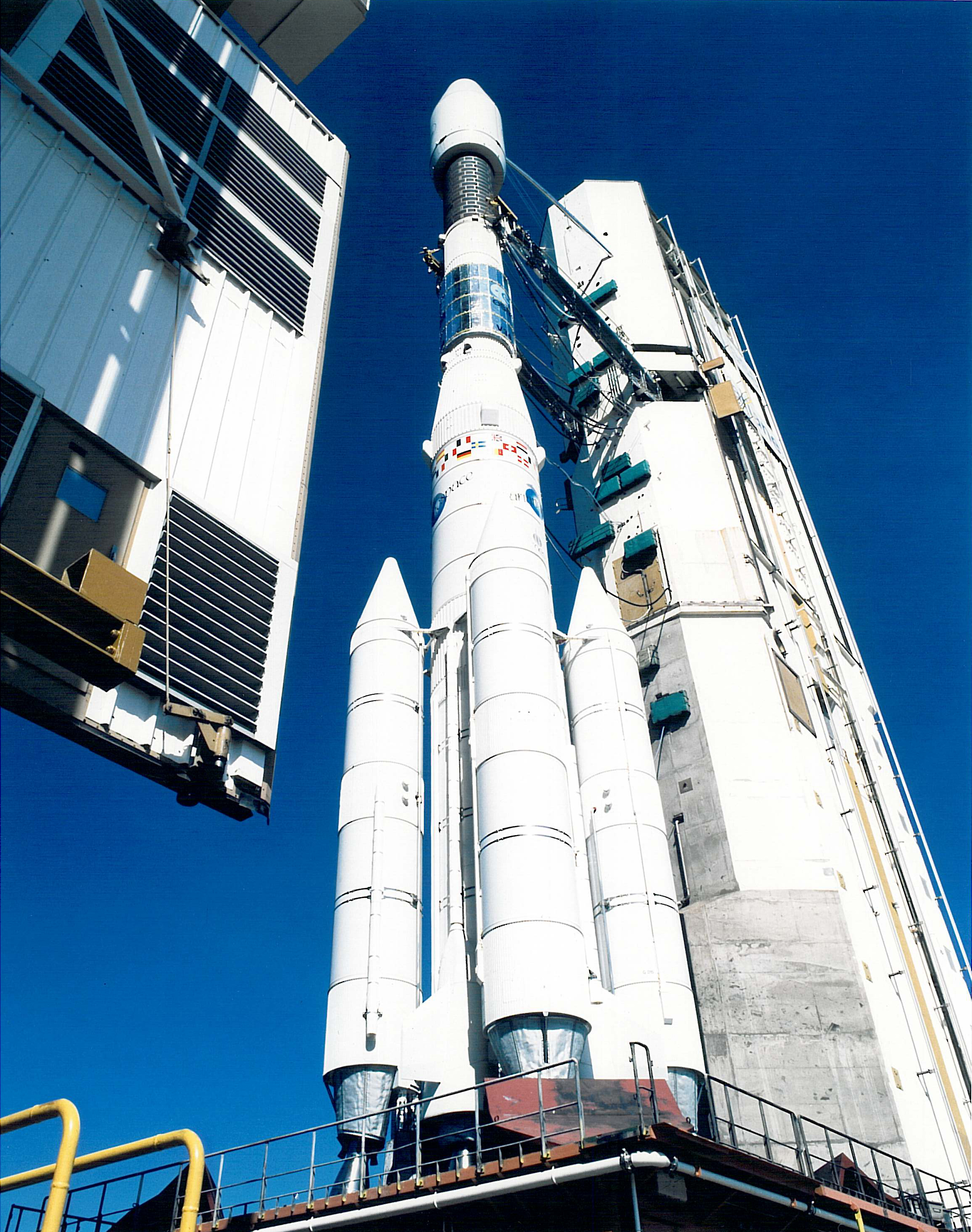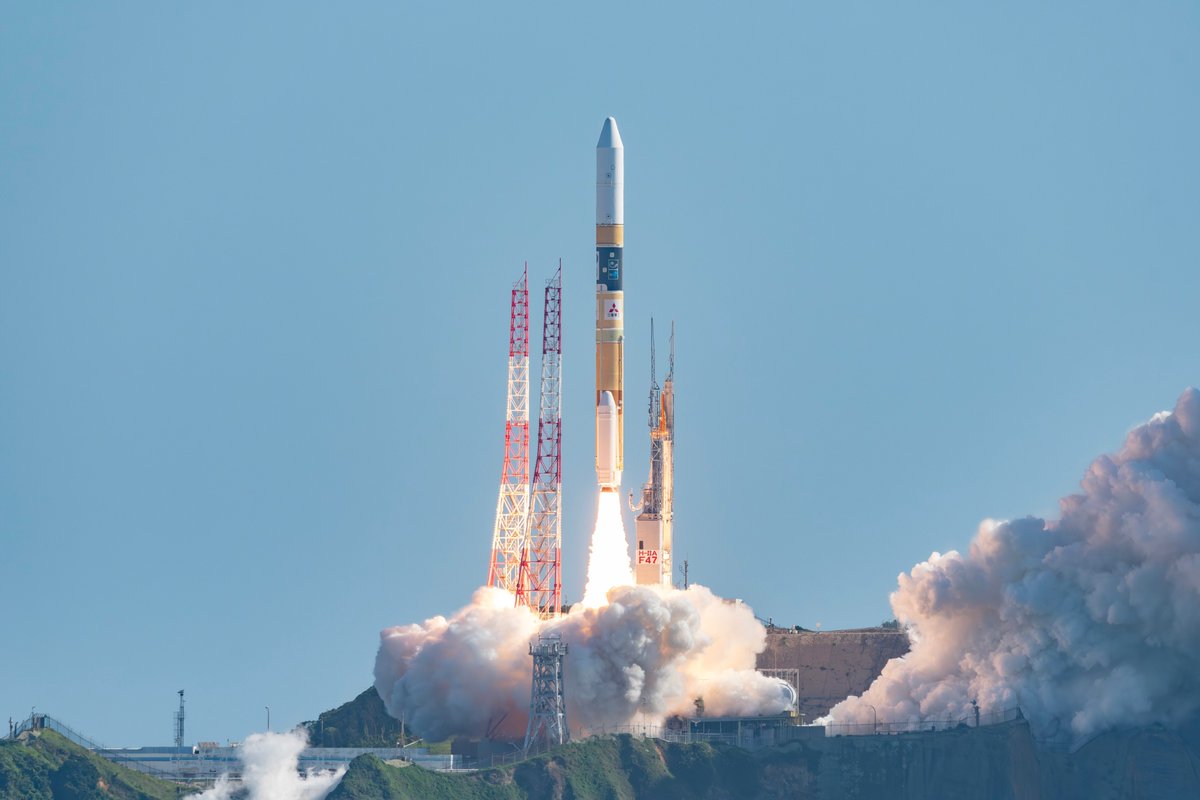Previous Spaceflight Launches
Filter by Agency, Locations or Vehicles
Show All LaunchesTaurus 2110 | OrbView-4
Orbital Sciences Corporation | United States of AmericaVandenberg SFB, CA, USA
Sept. 21, 2001, 6:49 p.m.
Status: Launch Failure
Mission:
Orbview 4 was a high resolution commercial Earth imaging satellite imagery. OrbView 4's imaging instrument was to provide one-meter panchromatic imagery and four-meter multispectral imagery. OrbView 4 was lost in an launch failure, when the Taurus-2110 carrier rocket suffered an loss of control, which was recovered, but orbit was not achieved.
Sun-Synchronous OrbitSoyuz U | Progress M-SO1
Russian Federal Space Agency (ROSCOSMOS) | RussiaBaikonur Cosmodrome, Republic of Kazakhstan
Sept. 14, 2001, 11:34 p.m.
Atlas IIAS | NROL-13
Lockheed Martin | United States of AmericaVandenberg SFB, CA, USA
Sept. 8, 2001, 3:25 p.m.
Status: Launch Successful
Mission:
NOSS-3 (Naval Ocean Surveillance System), which is likely not the official designation, is the third generation of NOSS satellites, which are low orbit SIGINT satellites. In 2013, the designation Intruder leaked out. These satellites carry equipment to track ships and aircraft via their radio transmissions. Positions of the origin of the transmissions are determined by triangulation. Each launch consists of two satellites of similar size in the same orbit. Both satellites maneuver to stationkeep relative to one another.
Low Earth OrbitAriane 44L | INTELSAT 902
Aérospatiale | FranceGuiana Space Centre, French Guiana
Aug. 30, 2001, 6:46 a.m.
Status: Launch Successful
Mission:
Intelsat 902 (IS-902) was the second of 9 new Intelsat satellites launched in August 2001 at 62°E. It will provide telecommunications and television broadcast to Europe, Sub-Saharan Africa, Central Asia, the Far East and Australia through its 44 C band and 12 Ku band transponders.
Geostationary Transfer OrbitH-IIA 202 | LRE
Mitsubishi Heavy Industries | JapanTanegashima Space Center, Japan
Aug. 29, 2001, 7 a.m.
Status: Launch Successful
Mission:
The H-IIA Launch Vehicle No.1 (H-IIA/F1) was launched at 4:00 p.m. on August 29, 2001, Japan Standard Time, from Tanegashima Space Center. The launch vehicle was successfully lifted off with its flight azimuth of 90 degrees. The H-IIA Launch Vehicle No.1 flied normally, and the second stage was successfully injected into the geostationary transfer orbit. The separation of the Laser Ranging Equipment (LRE) was confirmed about 39 minutes and 47 seconds after the lift-off.
Geosynchronous Transfer OrbitProton | US-KMO 5
Khrunichev State Research and Production Space Center | RussiaBaikonur Cosmodrome, Republic of Kazakhstan
Aug. 24, 2001, 8:34 p.m.
Soyuz U | Progress M-45
Russian Federal Space Agency (ROSCOSMOS) | RussiaBaikonur Cosmodrome, Republic of Kazakhstan
Aug. 21, 2001, 9:23 a.m.
Space Shuttle Discovery / OV-103 | STS-105
National Aeronautics and Space Administration | United States of AmericaKennedy Space Center, FL, USA
Aug. 10, 2001, 9:10 p.m.
Status: Launch Successful
Mission:
STS-105 was a mission of the Space Shuttle Discovery to the International Space Station, launched from Kennedy Space Center, Florida, 10 August 2001. This mission was Discovery's final mission until STS-114, because Discovery was grounded for a refit, and then all Shuttles were grounded in the wake of the Columbia disaster. The refit included an update of the flight deck to the glass cockpit layout, which was already installed on Atlantis and Columbia.
Low Earth OrbitDelta 7326-9.5 | Genesis
McDonnell Douglas | United States of AmericaCape Canaveral SFS, FL, USA
Aug. 8, 2001, 4:13 p.m.
Status: Launch Successful
Mission:
Launch delayed from February 10 and July 30. The Genesis probe flew to the Earth-Sun L1 Lagrangian point and spend two years collecting samples of the solar wind. The collected samples were to be physically returned to Earth in a sample return capsule (air-snatch recovery was planned over Utah) and analysed in ground-based laboratories. On September 8, 2004, the Genesis space probe became the first spacecraft to return from beyond lunar orbit to the Earth's surface. The Genesis Sample Return Capsule separated from the spacecraft on September 8, 66,000 km above the Earth. The capsule successfully re-entered the atmosphere over Oregon at 11 km/s, but a wiring error resulted in the drogue parachute release mortar failing to fire at 33 km altitude. The capsule crashed to earth at 90 m/s in the Dugway Proving Ground at 40 07 40 N 113 30 29 W. Although the vehicle was smashed, some of the samples could be retrieved.
Heliocentric L1Titan 402B IUS | DSP 21
Lockheed Martin | United States of AmericaCape Canaveral SFS, FL, USA
Aug. 6, 2001, 7:28 a.m.







